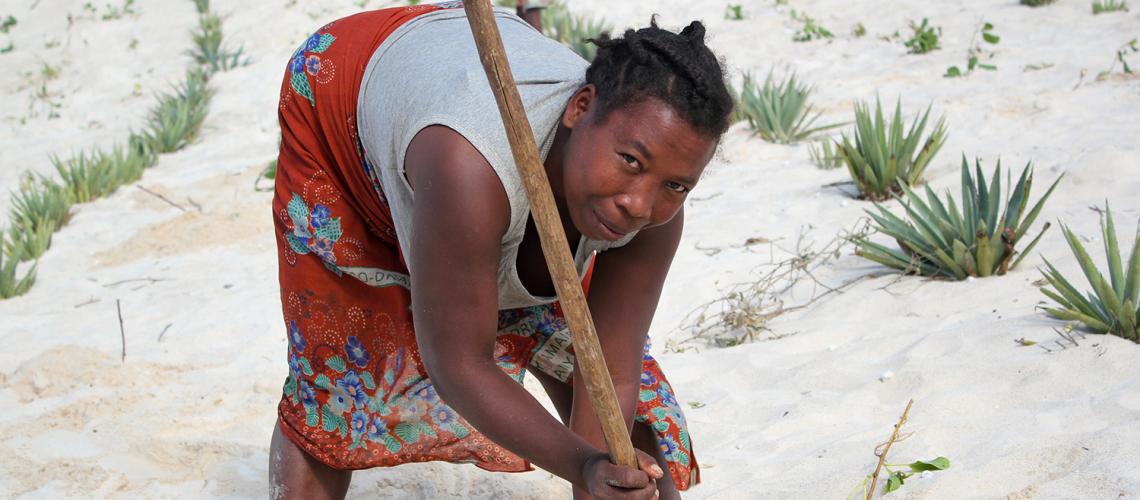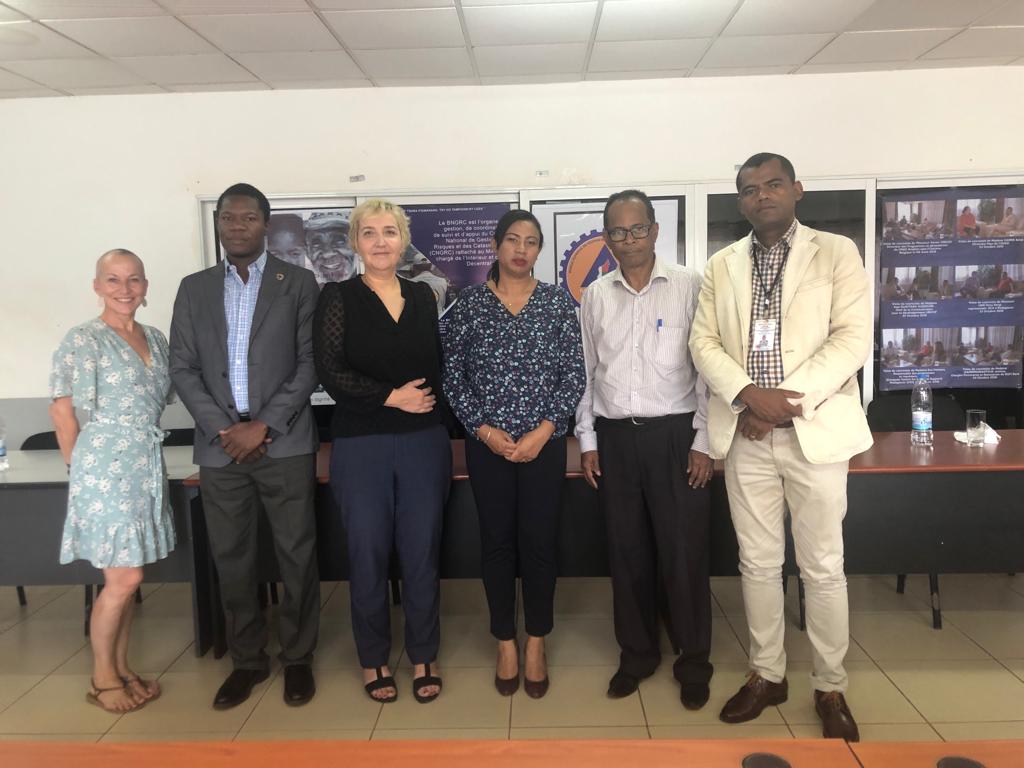
The Great South of Madagascar is hit by an unprecedented drought in several decades with more than one million people suffering from Kere (famine) and more than half a million children under five estimated to be acutely malnourished. The crisis can be explained, in part, by a conjunction of hazards: drought, locust invasion, sandstorm and plant and animal disease. Beyond this catastrophe, the large island of the Indian Ocean is considered extremely vulnerable to disaster and climate risk such as cyclones, drought, floods, and recurrent epidemics. This vulnerability is driven by high levels of poverty, degradation of natural resources, insufficient investment in infrastructure and limited access to social safety nets. The COVID-19 pandemic strongly impacted social and economic activities, particularly the tourism sector.

The government has renewed its policy and institutional framework for disaster risk reduction and implements large donor-funded programmes. In the context of the humanitarian crisis in the Great South, a strong consensus emerged on the need for a paradigm shift to better articulate emergency and development interventions for resilience, and the need for an in depth analysis to guide a new approach to capacity development that is more strategic, better contextualized, better coordinated between the different sectors and partners.The new United Nations Framework for Sustainable Development Cooperation 2021-2023 also offers an opportunity to strengthen the coherence of UN interventions in risk reduction.
The government called upon the CADRI Partnership in October to help devise a better coordinated and more efficient approach building on a diagnosis of country DRR systems. The CADRI Partnership undertook a scoping mission from 22 to 26 November 2021 to consult with a broad representation of country stakeholders in the public and private sector on the preparation for the capacity diagnosis.
The government prioritized eight sectors to be considered in the diagnosis of capacities to manage disaster risk: water and sanitation; social protection; education; health; agriculture and food and nutritional security; land use planning, infrastructure and housing; environment including textile and mining; and tourism. In addition, the diagnosis will consider key issues such as localization, horizontal and vertical coordination, integration of risk reduction into planning processes, information management, integrated early warning systems and DRR-CCA integration. Furthermore, rapid urbanization highlighted the necessity to consider urban disaster risks. Such a diagnosis is expected to help operationalize the new national DRR strategy. The UN system also emphasized the operationalization of the humanitarian-development-peace nexus in the Great South as a guiding thread for the programming of UN interventions in risk reduction across sectors.
Country stakeholders also stressed the need to map all interventions in DRR and CCA to ensure better coordination and synergies. They emphasized the importance of understanding the root causes of the lack of ownership and sustainability with the view to adopt a different approach to capacity development and enhance the working relations between partners and government agencies, particularly at the local level. Finally private sector stakeholders expect to be better capacitated to contribute to the prevention and preparedness efforts.
The CADRI Partnership will mobilize a multi-disciplinary team to support a government led capacity diagnosis as well as a UN joint DRR and CCA programme. The diagnosis mission will be carried out from 28 March to 8 April 2022.
